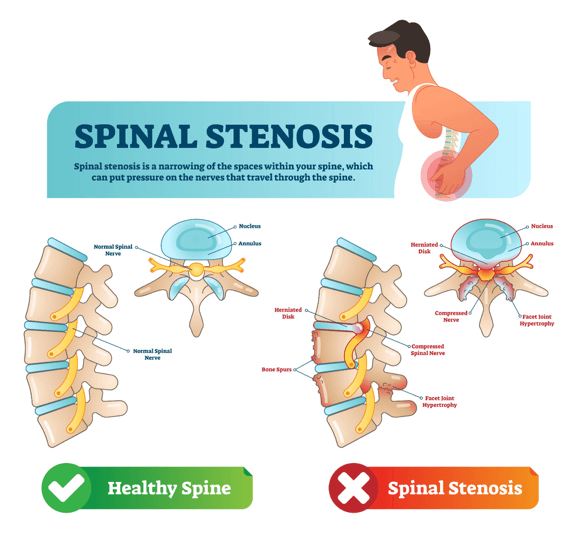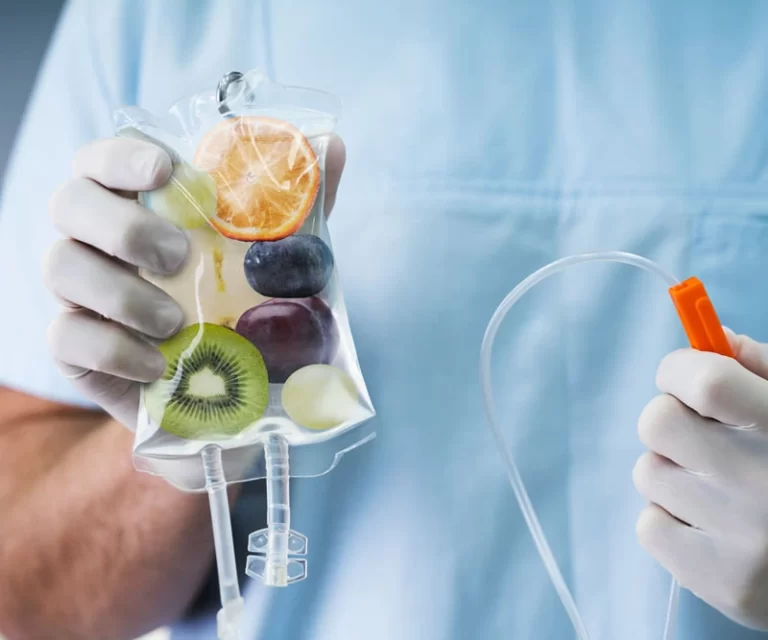Severe Low Back Pain During Periods
Introduction
For most women, menstruation can cause headaches, bloating, and stomach pain. Some women have low back pain in addition to the usual symptoms of the menstrual period. Those days of the month might bring on anything from a minor nuisance to crippling low back ache. The middle region of the lower back is usually where the discomfort is felt.
For most women, back discomfort normally starts a few days before the menstrual cycle and goes away after. Fortunately, low back discomfort during menstruation is typically not severe and will eventually go away.
If you experience this kind of discomfort during your menstrual cycle, it’s essential to comprehend the causes of it as well as coping mechanisms and pain management techniques.
What Brings On Low Back Pain While a Woman Is Menstruing?
Usually, muscular, low-back discomfort during menstruation is believed to be brought on by hormonal fluctuations.
Lower back muscles may be impacted by prostaglandins, which are substances secreted throughout a menstrual cycle to encourage uterine contraction and the shedding of the uterine lining. An overabundance of prostaglandins results in painful or dysmenorrheic menstruation. Severe contractions may cause lower back discomfort because the lower back might become affected by the lower abdomen’s pain.
Low back discomfort may also occur in endometriosis-affected women during their menstrual cycle. Should this raise any concerns, you might wish to discuss this diagnosis along with suitable treatment options with your physician.
Causes
There are several possible causes of discomfort during menstruation, including lower back pain.
According to the American College of Obstetricians and Gynaecologists, the most often reported menstruation condition is dysmenorrhea. Approximately 50% of those who go through their menstrual cycle have discomfort for one or two days at least.
Primary dysmenorrhea and secondary dysmenorrhea are the two types of period discomfort.
Primary dysmenorrhea
Cramps are the reason for primary dysmenorrhea. When primary dysmenorrhea sufferers first begin their menstrual cycle, they typically experience pain.
The uterus contracts during menstruation to separate the lining of the uterus from the surrounding tissue. The uterine muscles contract harder in response to prostaglandins, which are chemical messengers that resemble hormones.
Pain is increased when prostaglandin levels are elevated. Stomach pains may result from these contractions. Apart from pains in the stomach, there might be lower back discomfort that travels down the legs.
Lower back pain is common during menstruation.
Primary dysmenorrhea refers to pain associated with obtaining your period that is not brought on by a medical illness.
The majority of individuals who go through menstruation suffer from primary dysmenorrhea, which can manifest as lower back discomfort, aches, or cramps.
The primary culprits behind menstrual cramps are substances known as prostaglandins. Many prostaglandins are produced by the uterine endometrial cells just before menstruation.
These substances are widely distributed throughout the body and are crucial for both healing and inflammation. Nevertheless, cramping may result from a buildup of prostaglandins.
The body produces less prostaglandins during menstruation when the uterine lining sheds. This often indicates that the discomfort lessens.
Period cramps are also caused by uterine contractions. The uterus contracts to expel its previous lining. This is a far less intense form of labor contraction.
Some persons have lower back discomfort as a result of these muscle spasms.
Secondary dysmenorrhea
At a later age, secondary dysmenorrhea frequently develops. Other than cramps, there are physical problems that either cause or worsen the discomfort.
Nevertheless, prostaglandins may still contribute to secondary dysmenorrhea sufferers experiencing more discomfort. For instance, endometriosis frequently results in lower back discomfort.
Back pain that occurs during menstruation as a result of an illness or accident is referred to as secondary dysmenorrhea.
Sometimes the discomfort is there at other times, but it gets worse when you’re menstruating.
Discover the major causes of secondary dysmenorrhea and how to manage it below.
Several additional underlying disorders can also affect the lower back and abdomen, such as:
- infections
- growths
- fibroids
- other conditions that affect the reproductive organs
It’s advisable to visit a doctor if your lower back discomfort is severe so they can rule out any underlying conditions.
Endometriosis
Uterine tissue can proliferate outside the uterus in certain individuals. It can cause excruciating discomfort by wrapping around other organs.
This medical condition is known as endometriosis, and it can also result in heavy, clotty periods and intermenstrual bleeding.
An individual may feel discomfort in the endometrial tissue region. Spinal endometriosis is a condition in which tissue grows around the spine and other lower back locations in certain persons. Serious back pain may result from this.
A doctor may prescribe birth control pills or, in certain cases, surgery to manage endometriosis.
Uterine fibroids
Noncancerous growths in the uterus called uterine fibroids can grow extremely big. During their periods, they inflict excruciating agony, particularly back discomfort.
Severe symptoms from fibroids may disappear on their own without medical intervention. Occasionally, however, a physician may advise having them surgically removed.
Adenomyosis
The uterine muscles can occasionally develop from the tissues lining the organ. Adenomyosis is the medical term for this condition.
When someone has adenomyosis, they might
- painful periods
- pain during sex
- bleeding between periods
- Moreover, if a patient feels that their uterus is enlarged during a pelvic exam, a doctor may suspect it.
This disorder can be treated with hormone treatment, surgery, and in severe situations, uterine excision.
Back conditions and injuries
Some back pain sufferers have worsening symptoms either before or during their menstrual cycle. This might be a result of the uterine prostaglandins releasing inflammatory substances that worsen back pain.
While the exact nature of the back ailment and the patient’s general health determine the course of treatment, some find that physical therapy or exercise is helpful.
Surgery can be necessary for those with more severe ailments, such as badly herniated discs.
Other symptoms
In addition to back discomfort, dysmenorrhea can cause a variety of additional symptoms. Among these signs are:
- stomach cramps and pain
- fatigue
- diarrhea, nausea, and vomiting
- leg pain
- headaches
- fainting
One common cause of lower back discomfort during menstruation is endometriosis. Symptoms of endometriosis in addition to those mentioned above include:
- extreme pain during your period
- pain during sex
- heavy bleeding during your period
- infertility
- fainting
- difficulty with bowel movements
It’s crucial to keep in mind that endometriosis can occasionally present with very few or no symptoms at all.
In addition to dysmenorrhea, the symptoms of pelvic inflammatory disease (PID), which can also result in lower back discomfort, include the following:
- fever
- pain during sex and urination
- irregular bleeding
- a discharge with an unpleasant odor or more of it
- fatigue
- vomiting
- fainting
Sexually transmitted infections (STIs), such as chlamydia and gonorrhea, are frequently the cause of PID. The reproductive organs may get infected with the infection’s microorganisms.
Tampon usage may potentially be the cause of it. Speak with your physician if you believe you may have a PID or STI.
Underlying conditions
The pain in your back during your period might be caused by a variety of underlying issues. Among them are:
- endometriosis. is a disorder in which the endometrium, the lining of the uterus, is located outside of the organ.
- adenomyosis. a disorder in which the uterine lining develops into the muscles of the uterus.
- PID is a bacterial illness that propagates from the uterus.
- fibroids in utero. These tumors are benign.
- unusual pregnancy. This covers miscarriage or ectopic pregnancy.
- Speak with your doctor if you think you may have any of these problems.
You may require several tests in order to make a diagnosis or identify the underlying cause of certain diseases. These may consist of:
- a pelvic exam
- an ultrasound
- an MRI, which creates an interior organ picture
- laparoscopy, which is putting a tiny tube into the abdominal wall that has a lens and light in it. This makes it possible for the medical professional to locate growths in the pelvic and abdominal regions.
- hysteroscopy, which entails passing a viewing device via the cervical canal and vagina. This allows one to see inside the uterus.
Home remedies
For those who suffer from it, lower back pain may be excruciating. Thankfully, some natural treatments might help with back discomfort. Among these therapies are:
- Heat. The discomfort might be reduced by using hot water bottles or heating pads. The effects of hot baths and showers might be similar.
- back rubs. You can ease the discomfort by rubbing the afflicted region.
- Work out. This might be doing yoga, walking, or mild stretching.
- Rest. Consider taking a nap in a position that reduces your back discomfort.
- Acupuncture. According to research from the National Institute of Neurological Disorders and Stroke, acupuncture has a somewhat positive impact on the management of lower back pain.
- abstaining from smoking, coffee, and alcohol. These may make uncomfortable times worse.
How to Reduce Painful Low Back Pain and Cramping:
- A few days before their periods, some women find it helpful to begin taking over-the-counter acetaminophen or anti-inflammatories like naproxen or ibuprofen.
- Engage in regular exercise. Regular exercisers experience less unpleasant period cramps and lower back discomfort, according to studies.
- Eat a balanced diet and take vitamin B and magnesium pills as supplements.
- To keep hydrated, sip lots of water.
- Put on some heat or have a warm bath.
- Steer clear of chocolate and coffee.
- Steer clear of smoke and alcohol.
- To relieve menstruation discomfort, some women might need to use birth control tablets.
- Seeking medical assistance is advised if your lower back pain persists beyond the menstrual cycle or if you have leg discomfort or weakness. It is possible that your lower back pain is not just the result of prostaglandin production during menstruation. The following are the main signs of back pain that you should not disregard as they may be harmful to your health:
Top Pain Symptoms You Must Pay Attention To:
- More than ten days’ worth of pain
- tingling and numbness in the legs or feet accompanied with pain
- weakness accompanied by pain in the foot or legs
- discomfort accompanied by a lack of bladder control
- heat and pain together
We all know that fear of hearing the doctor’s findings is a major factor in people’s apprehension about seeing the doctor. Patients should ascertain the cause of their condition and then take proactive measures to maintain their spine and well-being. Something could not be correct if it doesn’t feel right.
Over the past 15 years, the area of spine treatments has advanced significantly because of innovation and contemporary technology. The days of using inactivity as a therapeutic tool are long gone. Thanks to contemporary technology, patients are returning to their lives more quickly by getting up and moving sooner.
To arrange for your initial examination, please call us if you are experiencing neck or back discomfort. We can help you return pain-free to a happy and meaningful life!
If any of the following situations arise, a person should see a doctor for period pain:
- Home care methods either stop functioning or don’t work at all.
- There is no alleviation from medication.
- Accompanying symptoms include vaginal soreness, sex-related pain, and bleeding in between periods.
- New or getting severe period discomfort.
- The person’s inability to go to work or school is due to the severe pain.
- Other symptoms related to the back or muscles include discomfort when walking, trouble lifting objects, or spasms in the muscles.
- For more than two hours, the intense bleeding soaks through one or more tampons or pads per hour.
Summary
One of the most prevalent symptoms of period-related disorders, such as PMS, is lower back discomfort throughout the menstrual cycle. Certain diseases such as endometriosis, dysmenorrhea, or PMDD may cause the discomfort to worsen.
Severe lower back discomfort during menstruation may be treated with birth control, NSAIDs, complementary and alternative medicine, and surgery.
In addition, there are several at-home treatments for lower back pain, such as heat, rest, and little exercise. It’s time to see your doctor, though, if your lower back pain is so bad that conventional treatments are ineffective.
FAQs
Is it normal to have severe back pain during the period?
During menstruation, back and lower pelvic discomfort are prevalent. The prostaglandins are the offenders. These are chemicals that the uterus produces to aid in the body’s recovery from trauma or stress. They also control how the muscles contract and relax.
How can I control my back pain during my period?
Among these therapies is heat. The discomfort might be reduced by using hot water bottles or heating pads.
back rubs. You can ease the discomfort by rubbing the afflicted region.
Work out. This might be doing yoga, walking, or mild stretching.
Rest.
The practice of acupuncture.
abstaining from smoking, coffee, and alcohol.
What should I eat to relieve back pain during my period?
Changing one’s diet can help manage back pain during menstruation. Inflammation and cramping in the muscles can be lessened by eating meals high in magnesium and omega-3 fatty acids. Limiting salt and caffeine consumption may also aid in lessening the pain.
Does period back pain get worse with age?
As you mature, your period discomfort may grow better or worse. Period pain can be impacted by several things, including pregnancy and the use of birth control. As people age, underlying medical disorders such as endometriosis and uterine fibroids may exacerbate period discomfort.
How should I sleep with sharp lower back pain?
How to Get Comfort and Relief While Sleeping with Lower Back Pain
The ideal sleeping posture for those with lower back discomfort is to lie on your side and slightly bend your knees. Bending the knees relieves strain on the lumbar spine and aids in maintaining bodily balance.
References
Tips To Reduce Lower Back Pain During Menstruation. Virginia Spine Institute. https://www.spinemd.com/tips-to-reduce-lower-back-pain-during-menstruation
How to Treat Severe Lower Back Pain During Your Period. Healthline. https://www.healthline.com/health/womens-health/severe-lower-back-pairing-period#takeaway
What causes lower back pain during a period? https://www.medicalnewstoday.com/articles/lower-back-pain-period







